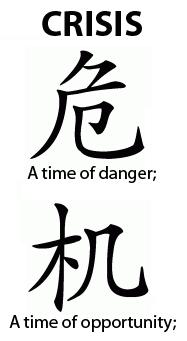Wednesday, April 28, 2010
An Inside Look at Marc Jacobs
Wednesday, April 21, 2010
Diversification. Can it Result in a Crisis?
It seems that Fashion mogul Marc Jacobs is slowing monopolizing New York City's West Village owning 5 clothing stores in the Bleecker Street are, and now he is looking to expand his hold with the opening of a book store.
New York magazine recently reported that Biography Book Shop on Bleecker Street now has a sign on the window saying, "A bookstore will be opening here Winter 2010."And the magazine claims that the book store will belong to designer Marc Jacobs. It is rumored to have the clever name "Book Marc" and to be the fashion icons 6th store in the area.

While this may seem a strange endeavor for a fashion designer, it is not the first time Jacobs has stepped out of the box. His latest store in Milan featured a full service cafe.
So this poses the question, does a book store stray too far from the company's image, and could it potentially cause a crisis for the company down the road?
Looking into the success of Marc Jacobs stores, I am compelled to answer no. Based on the popularity of this American designer, it seems that everything he touches turns to gold. It seems that people are drawn to anything with the Marc Jacobs name. It is my belief that if a cafe in Milan can succeed, so can a book store in New York.
Wednesday, April 14, 2010
Technology: An Emerging Trend In Crisis Management
 Reliance on the Internet can also effect how a company manages a crisis on an external level. With the general public utilizing social medias such as Facebook, Twitter, blogs and LinkedIn to gather information on a company, it is important to utilize these mediums to communicate with publics. Social media can be an extremely efficient and easy way for a company to reach its target audiences.
Reliance on the Internet can also effect how a company manages a crisis on an external level. With the general public utilizing social medias such as Facebook, Twitter, blogs and LinkedIn to gather information on a company, it is important to utilize these mediums to communicate with publics. Social media can be an extremely efficient and easy way for a company to reach its target audiences.Wednesday, April 7, 2010
 Ethical dilemmas influence how almost every company makes decisions. While today the creation of a Company Code of Ethics is common, it is the actual implementation of said code where many corporations falter.
Ethical dilemmas influence how almost every company makes decisions. While today the creation of a Company Code of Ethics is common, it is the actual implementation of said code where many corporations falter. 
Tuesday, March 30, 2010
Marc Jacobs: Fashion Week Recap
Wednesday, March 24, 2010
Seeing the Opportunity in a Crisis
 An ancient Chinese proverb states that "a crisis is an opportunity riding a dangerous wind". It has been shown time and again that this statement is true. From every crisis comes the opportunity for an organization to learn from past mistakes and take action to prevent a similar crisis from occurring in the future.
An ancient Chinese proverb states that "a crisis is an opportunity riding a dangerous wind". It has been shown time and again that this statement is true. From every crisis comes the opportunity for an organization to learn from past mistakes and take action to prevent a similar crisis from occurring in the future.Wednesday, March 17, 2010
Fashion D-Day



Wednesday, March 3, 2010
Crisis on the Runway
New York Fashion Week has come and gone leaving in its wake a plethora of stories and updates about the major designers. Opinions on which designer runway shows topped the list began circling across the media immediately, more often than not, placing Marc Jacobs right at the top! Reviews were rave, applauding Jacobs simple background and wearable Fall line. The high of this runway success however, did not last long. As always, the company's next crisis was right around the corner at the shows after-party.
Crises like this can occur at the drop of a hat, which is why it's important to have a PR team that can effectively manage it. Responding quickly and mitigating the effects of the crisis show to be extremely important while a crisis is occurring. While Duffy quickly admitted that posting the photo was not showing the best judgement, it seems the Marc Jacobs PR department may have had enough of how Twittering mishaps.
It seems Marc Jacobs President Robert Duffy can't help but to stir up controversy on his recently removed Twitter page. At the fashion shows after party, Duffy decided to upload so pictures from his phone to his Twitter page. While I am sure fans were excited to get an inside look at the happening of a party that was privy to fashion insiders Rachel Zoe and Bee Shaffer, they may have gotten more than they bargained for when Duffy uploaded a photo of a naked man to the page.
This was not the first issue the Jacobs brand has seen since Duffy began Twittering a mere month ago, so it was no surprise to me when a few days later, he bowed out of the twittershpere. So it makes me wonder... Did Duffy choose to say goodbye to Twitter, or was the site just causing the company too many issues?
Wednesday, February 24, 2010
The Organizational Strategy

Tuesday, February 16, 2010
Fashion Emergency! Are You Prepared?

 Understanding the that fashion industry, like any other industry is prone to various crises, it is clear that the Jacobs PR department must get more information into all potential risks to the company and develop strong guidelines on how to react to them. When crises have occurred in the past, representatives for the company have been hesitant to comment or release statements. This is not a very effective way to contain and minimize the damage of a crisis.
Understanding the that fashion industry, like any other industry is prone to various crises, it is clear that the Jacobs PR department must get more information into all potential risks to the company and develop strong guidelines on how to react to them. When crises have occurred in the past, representatives for the company have been hesitant to comment or release statements. This is not a very effective way to contain and minimize the damage of a crisis.
Had the company prepared for potential crises and drafted a crisis management plan, they would have had more success in protecting the image of the brand. As Marc Jacobs has seen, it is possible for a crisis to occur in any industry, fashion included, and it's time for major fashion houses to step up and prepare for the inevitable fashion emergency.
Wednesday, February 10, 2010
New Media Creating a Crisis
For example, when Duffy released several top executive phone numbers on his twitter page, the company faced an extreme overflow of calls that they were unprepared to deal with. This not only compromised the time of the companys executives, but also tied up their phone lines and prevented important phone calls from getting through. Although this may not seem like an extreme crisis, it proved to be detrimental to the fashion house.
This examples goes to show that no matter how much you may want to, you cannot control what people choose to post on the internet. Although Duffy probably did not think much of it at the time, he created a minor crisis for the organization through the use of his social media page.
To check out Duffy's twitter page, click here!
Wednesday, February 3, 2010
Get Started Before It's An Issue - Crisis Prevention
A crisis is any situation that may effect a company's image, reputation, or integrity and must be dealt with quickly. The best way to deal with whatever crisis may come your way is to prevent it. By developing a strategic approach to crisis prevention, a company can ensure that the come out of the situation in the best way possible.
Most crises have clear warning signals, and by researching and understanding the potential threats to your organization, you should be able to deal with a crisis quickly and effectively. In my previous post I discussed how fashion powerhouse Marc Jacobs could face a crisis caused by either internal and external factors. If left alone, many of these factors I mentioned such as the failing economy and selling of counterfeit Jacobs goods, could potentially turn into crises for the company.

Because Marc Jacobs is such a well-known and sought after fashion line, it is important for the company to have a strong crisis prevention plan in place. The need for crisis prevention was clear when the Marc Jacobs name was dragged through the mud in a 2008 bribery scandal. While it was not reported that the company knew about the use of bribes to attain the Armory for their show during the 2008 New York Fashion Week (the space was booked through an outside agency), they received a lot of bad press on the issue. Even after the news broke, Jacobs did not issue any statements and refused to comment when asked about it. Had Marc Jacobs assesed the potential risks to allowing a different agency to book their venue, they may have avioded being involved in the scandal at all.
Thursday, January 28, 2010
Welcome!
In class this week, Professor Laskin explained that crises can be caused by an outside or inside error (deliberate or not). Marc Jacobs, for example, can potentially face crises from outside causes such as the failing economy and outsiders selling "knock-off" versions of his designer products on the black market or inside causes such as faulty products or the plagiarism of others' designs.
For example, a few years back Marc Jacobs was accused of plagiarising the design of one of his scarfs. The son of the Swedish man who originally created the design recognized the similarities and filed a suit against Jacobs. For more on the plagiarism scandal, click here.




